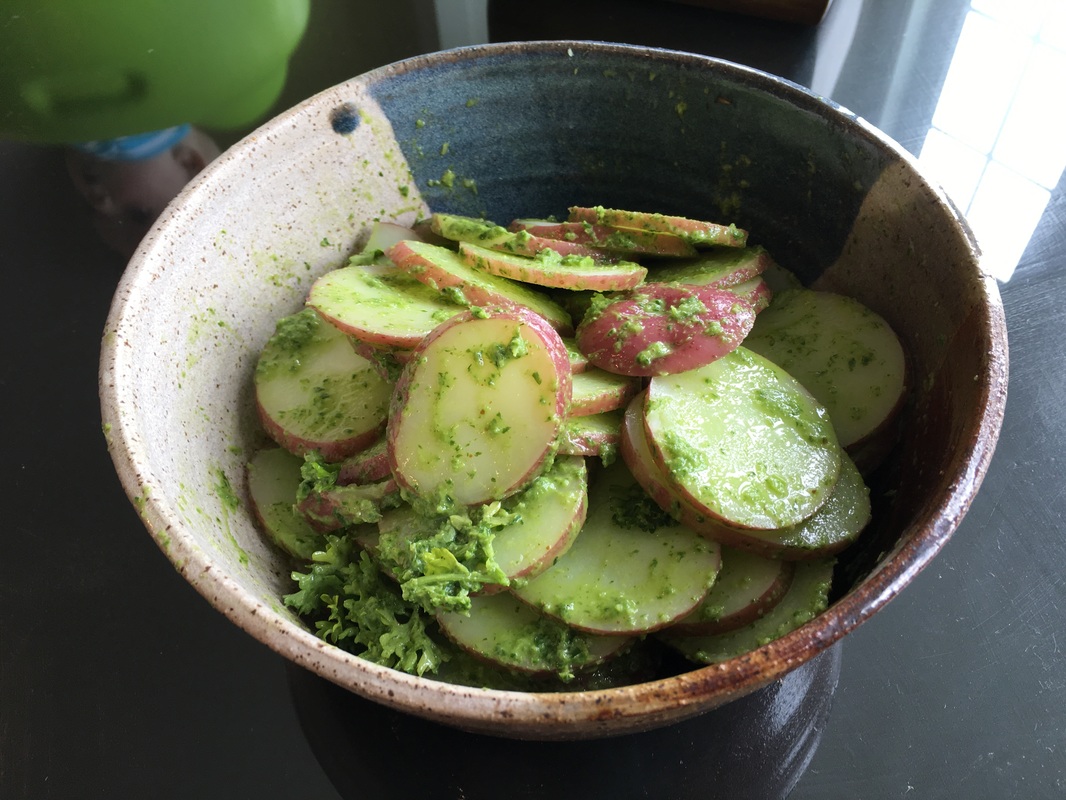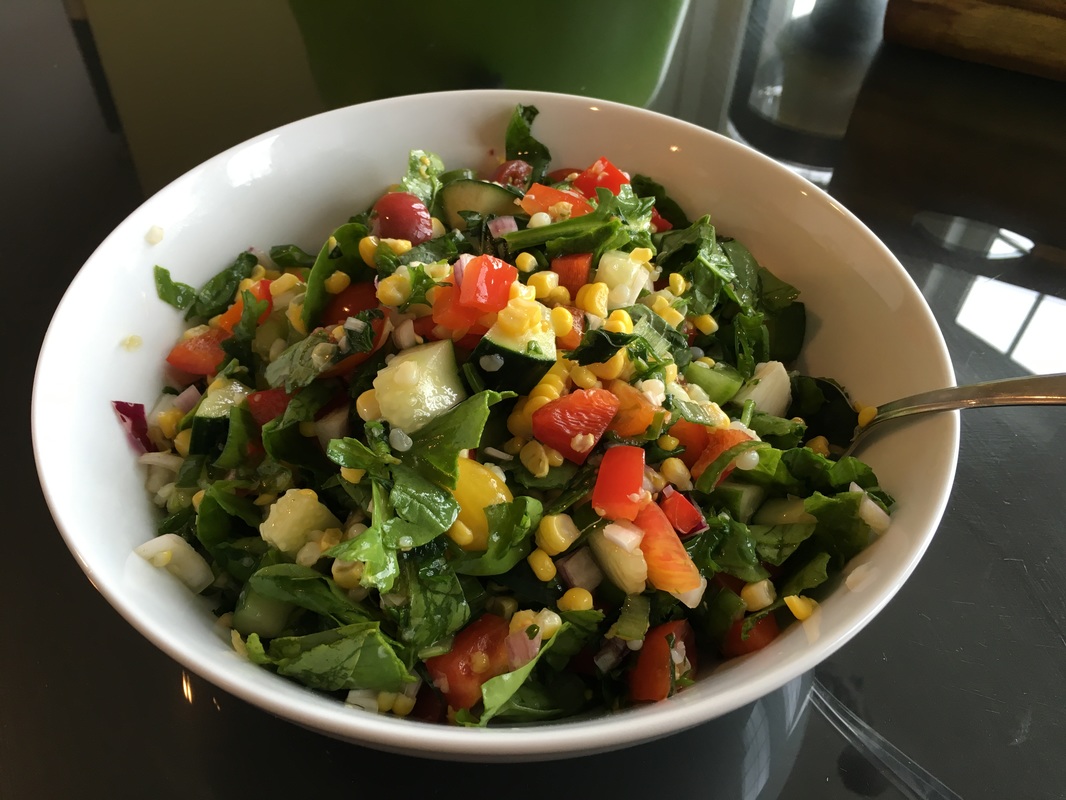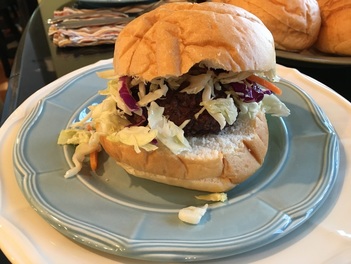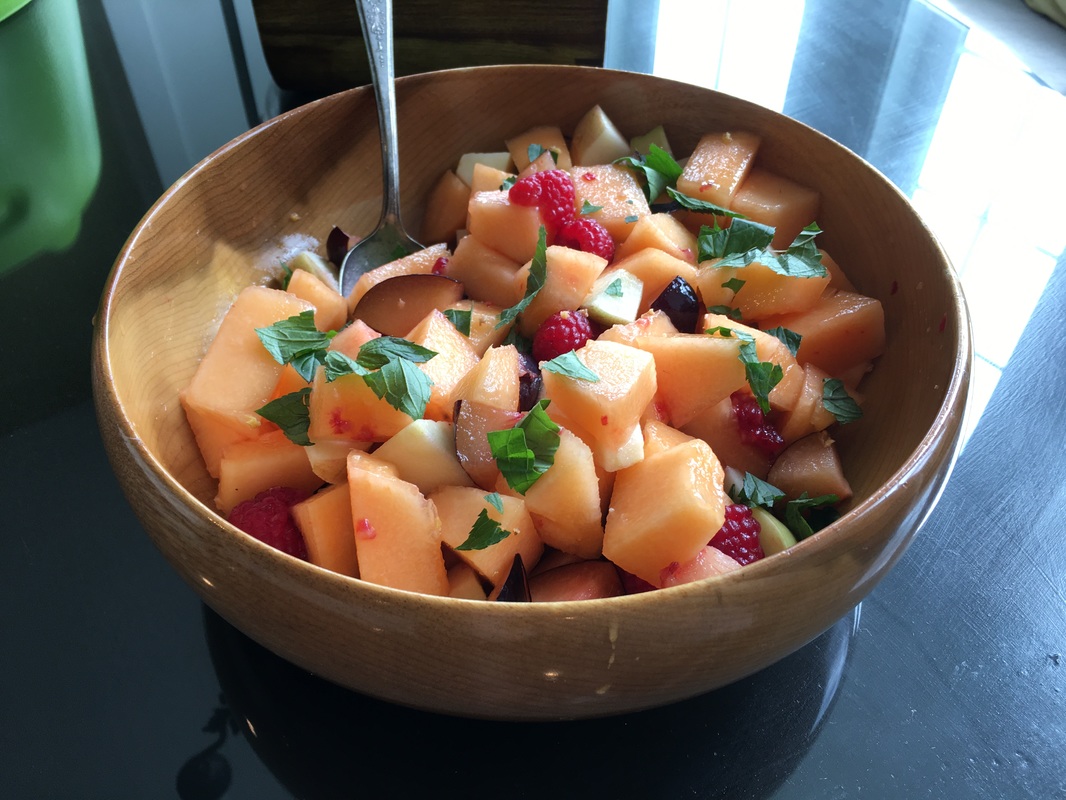|
Over the last several months, Amanda and I (Anna) have been leading a Seasonal Eating class at Verdant Health Commission in Lynnwood. During each class, we create recipes to emphasize seasonal and local produce. We cook the recipes, discuss various nutrition topics, and taste test all the food at the end of class. (That seems to be a favorite part!) During our most recent class, we prepared dishes that highlighted a variety of local and seasonal produce for the month of August—corn, potatoes, tomato, cucumber, onion, plums, melon, berries, parsley, basil, mint, arugula, grass fed beef and more! The recipes we utilized were fresh, light, colorful and, of course, nutritious. First up, we prepared the Herbed Potato Salad. The recipe for this potato salad was a fun twist on a traditional potato salad, using an olive oil based dressing instead of mayonnaise. We chose to use olive oil, as research shows it helps to reduce inflammation in the body and is great for heart health. The combination of herbs in the dressing offered beautiful color, mouth-watering aroma, and a punch of flavor to the sauce. Additionally, herbs contain a variety of polyphenols (plant compounds with antioxidant and anti-inflammatory properties), which research shows help protect against a variety of diseases such as heart disease, diabetes, cancer and more.
Resistant Starch During class we discussed the concept of resistant starch. Resistant starch is a type of dietary fiber in starchy foods, such as potatoes, corn, grains and beans. When these starchy foods are cooked, and then cooled, the starches form a crystalline structure, which makes them resistant to digestion (hence the name “resistant starch”). By being resistant to digestion, these fibers offer a whole host of health benefits! To read more about the long list of benefits of consuming resistant starch, as well as ways to incorporate more into your diet, check out THIS article! Color indicates nutrition! Even greater, different colors indicate that the different foods contain different phytonutrients (for example, red/pink could indicate that a food contains the antioxidant lycopene; orange, beta-carotene; purple/blue, anthocyanin). These phytonutrients provide amazing health benefits, stemming from protection against heart disease to cancer prevention.
As a side note, grass fed beef can be quite expensive. One way around the cost is to purchase 1/4 or 1/2 a cow from a local farmer and split the cost with a friend or family member. From personal experience, doing so can cut the cost of grass-fed beef down by about half. The website www.eatwild.com is a great resource to find local farmers who sell pasture-raised beef, pork, poultry and dairy. At the end of the day, though, we have to balance our own personal values with our budget. So of course, do what you can, when you can! Thanks to those who joined us for this class! We had a lot of fun, great conversation and, best of all, tasty food! We enjoyed all of our participants and hope you join us for the final installment of our Seasonal Eating series on August 22nd. For more information on class schedules, head to www.verdanthealth.org.
~Anna
0 Comments
Leave a Reply. |
SD BlogA place for our consultant Registered Dietitian Nutritionists (RDNs) to share nutrition science, yummy and healthy recipes, tips on seasonal ingredients, and other nutritional musings. Enjoy! Categories
All
Archives
May 2024
|






 RSS Feed
RSS Feed